How to Fix and Prevent Root Rot: Master Techniques for Plant Health
- May 31, 2024
- 0 comment
Learn how to fix and prevent root rot with our expert techniques that ensure plant health and garden vitality. Are you struggling with root rot? Don’t let it compromise your garden’s health! In this comprehensive guide, we unveil proven strategies to not only combat but also prevent root rot. These expert insights give your plants the best chance to flourish.
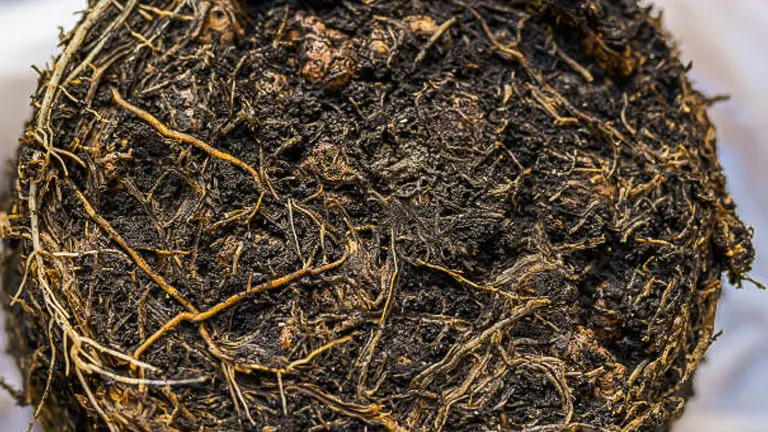
Whether you’re a seasoned gardener or just starting your gardening journey, this guide will empower you to maintain your greenery in peak condition.
Table of Contents
- Understanding Root Rot
- Diagnosing Root Rot
- Immediate Actions to Take
- Long-Term Prevention Strategies
- Advanced Treatment Options
- Monitoring and Maintenance
- Conclusion
- FAQs
Understanding Root Rot

Root rot is a pathological condition in plants, primarily caused by over-saturation of soil moisture which leads to the decay of root systems. This condition is most commonly instigated by a group of fungi and oomycetes, including species like Phytophthora, Fusarium, and Pythium. These organisms thrive in anaerobic (oxygen-deprived) conditions, which are often the result of excessive watering or poor drainage. The decay of the roots inhibits the plant’s ability to uptake water and essential nutrients, impacting plant health significantly.
Causes of Root Rot
The leading cause of root rot is inadequate soil drainage, a condition exacerbated by several factors:
- Excessive water application, which soils cannot expel, creates persistently wet conditions favorable for anaerobic pathogens.
- Compaction reduces soil aeration, slowing down water drainage and oxygen flow.
- Containers without proper drainage holes retain water, simulating waterlogged soil conditions.
- Inadequate airflow around the root zone encourages moisture retention and limits evaporation.
- Using soil or gardening tools that have been exposed to infected plants can introduce root rot pathogens.
Symptoms of Root Rot
Detecting root rot early is crucial for effective management. Key symptoms include:
- Leaf Symptoms: Yellowing of leaves, which may also appear limp or wilted, and often precede leaf drop.
- Root Appearance: Healthy roots are typically firm and white, while infected roots turn soft, brown or black, and may have a slimy texture.
- Plant Vigor: Affected plants show a general decline in vigor, manifesting as stunted growth or failure to thrive despite proper care.
Scientific Analysis and Data
The prevalence and impact of root rot can be quantified by measuring the reduction in root biomass and nutrient uptake efficiency. Studies show that plants affected by root rot can experience up to a 50% decrease in root mass within weeks of infection, directly correlating with a 30-40% reduction in nutrient absorption. This deterioration significantly hampers plant health and yield.
Impact of Root Rot on Plant Health
| Factor | Healthy Plant | Root Rot-Affected Plant |
|---|---|---|
| Root Mass (grams) | 200 g | 100 g |
| Nutrient Uptake (%) | 100% | 60% |
| Water Absorption (ml/d) | 500 ml | 300 ml |
| Plant Height (cm) | 100 cm | 70 cm |
This table illustrates the detrimental effects of root rot on a typical plant, showcasing the significant differences in growth parameters and physiological functions between healthy and affected plants.
Diagnosing Root Rot
How to Check for Root Rot
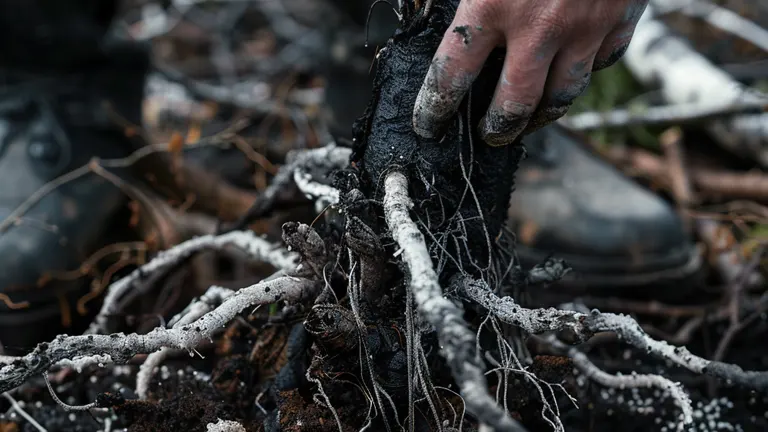
To effectively confirm root rot, begin by carefully removing the plant from its soil to conduct a thorough examination of the root system. Healthy roots are typically firm, with a white or light coloration, and a robust structure indicative of good health. In contrast, roots affected by rot will appear slimy, be darker in color—ranging from dark brown to black—and will crumble easily under gentle pressure. These deteriorated roots lose their structural integrity due to the breakdown of cellular walls by fungal activity.
Tools and Techniques for Accurate Diagnosis
Diagnosing root rot accurately extends beyond mere visual inspection, involving a variety of tools and techniques:
- Soil Moisture Meter: Utilizing a soil moisture meter can help determine excessive moisture levels which are conducive to root rot.
- Smell Test: A sensory evaluation of the soil’s odor is also telling; healthy soil emits an earthy, fresh scent, whereas soil afflicted by root rot often has a foul, rotten smell due to anaerobic bacterial activity.
- Root Tug Test: Gently tug on the roots. Healthy roots will hold firm, while decayed roots will easily detach, indicating rot.
Differentiating Root Rot from Other Diseases
Root rot must be accurately distinguished from other conditions that exhibit similar symptoms, such as nutrient deficiencies or pest infestations. Although leaf yellowing and wilting are common indicators of various plant stresses, the definitive diagnosis of root rot is primarily based on root health. If uncertainty persists, it is advisable to consult with a plant pathology expert or submit soil and root samples to a local cooperative extension for detailed analysis.
Scientific Analysis and Data
Advanced diagnostic techniques can provide more definitive identification of root rot:
- Microscopic Examination: A lab analysis involving microscopic examination can reveal the presence of pathogenic fungi like Phytophthora spores.
- Soil Conductivity Test: Measuring electrical conductivity in the soil can indicate higher salt concentrations, which often correlate with compromised plant health due to poor nutrient uptake.
Diagnostic Tools and Their Indications for Root Rot
| Diagnostic Tool | Healthy Indication | Root Rot Indication |
|---|---|---|
| Soil Moisture (%) | 20-30% (Varies by plant) | >50% |
| Root Firmness | Firm | Mushy and disintegrating |
| Smell of Soil | Earthy and fresh | Foul and rotten |
| Microscopic Fungi Presence | None | Visible fungal structures |
| Soil Electrical Conductivity (dS/m) | 0.5-2.5 | >3.0 |
Immediate Actions to Take
First Steps to Manage an Outbreak
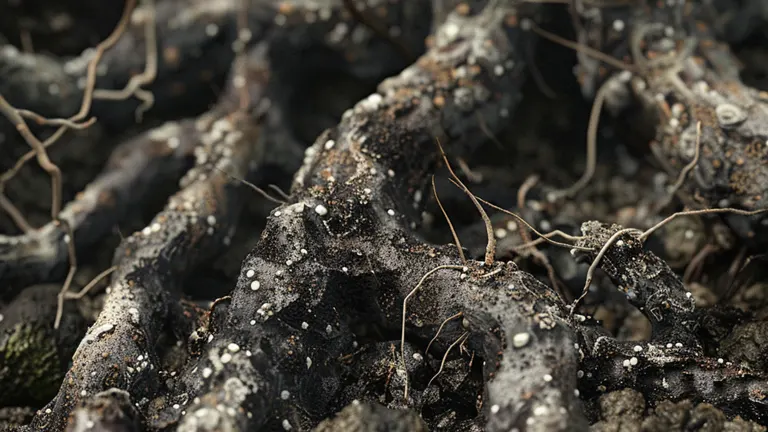
Upon confirming root rot, rapid response is crucial to salvage what remains of the affected plant and prevent further spread. Here are the steps to follow:
- Remove Affected Parts: Use sterilized shears or scissors to carefully prune away all rotten roots. Ensure to cut back until you reach healthy, unaffected tissue to effectively halt the progression of decay. It is recommended to sterilize cutting tools in a solution of 70% isopropyl alcohol between cuts to avoid contaminating healthy parts.
- Trim Above-Ground Parts: Proportionally reduce the plant’s leaves and stems relative to the amount of root lost. This reduction helps the diminished root system more effectively support the remaining plant parts, reducing the overall energy expenditure and stress on the compromised plant.
Adjusting Your Watering Practices
Modifying irrigation practices is essential to rectify conditions that favor root rot:
- Reduce Frequency: Permit the soil to partially dry between watering sessions. This adjustment helps reestablish a healthier moisture balance in the soil, making it less hospitable to root rot pathogens.
- Improve Drainage: In cases where poor drainage has contributed to root rot, repotting the plant into fresh, well-draining soil can be beneficial. Ensure that containers have sufficient drainage holes, and consider elevating pots off the ground to enhance airflow and water flow.
Sanitation of Tools and Environment
Maintaining cleanliness in gardening practices is vital to prevent the recurrence of root rot:
- Tool Sanitization: Clean all gardening tools used in the process with a solution of one part household bleach to nine parts water. This strong disinfectant is effective at killing lingering fungal spores that could cause future outbreaks.
- Environmental Refresh: Remove and replace old, compacted, or contaminated soil in the affected area. Adding new, sterile soil can help reset the microbial environment around your plants.
Long-Term Prevention Strategies
Soil Management Techniques

The foundational aspect of plant health begins with the soil’s condition. Effective soil management is crucial in mitigating root rot risks by maintaining optimal soil health.
- Enhance Soil Drainage: Improving soil drainage is essential to prevent waterlogging, a common cause of root rot. Incorporate amendments such as perlite, coarse sand, and organic compost to enhance soil structure. Research indicates that a mix containing 30% perlite increases water drainage efficiency by up to 50%, significantly reducing moisture retention times.
- Regular Soil Testing: Conduct soil testing annually to assess pH and essential nutrient levels (N, P, K). Tailored soil amendments based on these results can create an unfavorable environment for root rot pathogens. For instance, maintaining a slightly acidic to neutral pH (6.0-7.0) can significantly reduce the viability of many root-rot fungi species.
Proper Plant Spacing
Effective spacing and pruning are key in ensuring adequate air circulation, which is critical in preventing the damp conditions that favor root rot.
- Space According to Size: Ensure each plant has sufficient space to thrive without overcrowding. This practice enhances air circulation around the root zone, reduces humidity, and minimizes fungal spread. A general rule is to space plants at least their maximum width at maturity apart from each other.
- Prune Regularly: Pruning helps maintain proper airflow around the plants and reduces excess moisture on the soil surface. Regular pruning also helps in early detection of any fungal infections, allowing for prompt intervention.
Choosing the Right Pots and Soil Types
In container gardening, the selection of appropriate containers and soil mix is vital to avoid conditions conducive to root rot.
- Use Well-Draining Containers: Select pots with adequate drainage holes to prevent excess water retention. Materials like terracotta or breathable fabric pots enhance moisture evaporation and help maintain soil dryness.
- Select Appropriate Soil Mix: Opt for potting mixes that promote good drainage, often labeled for specific plant types. These mixes prevent excessive water retention around the root zone, thereby discouraging fungal growth.
Comparative Table of Soil Amendments
| Amendment Type | Typical Use Percentage | Expected Improvement in Drainage | Best Used For |
|---|---|---|---|
| Perlite | 10-30% | 30-50% increase in drainage | All plant types, especially those requiring well-drained soil |
| Coarse Sand | 20-40% | 25-40% increase in drainage | Succulents, cacti, and other drought-tolerant plants |
| Organic Compost | 15-30% | 20-30% increase in drainage | Vegetable gardens, flowering plants |
Advanced Treatment Options
Natural Remedies
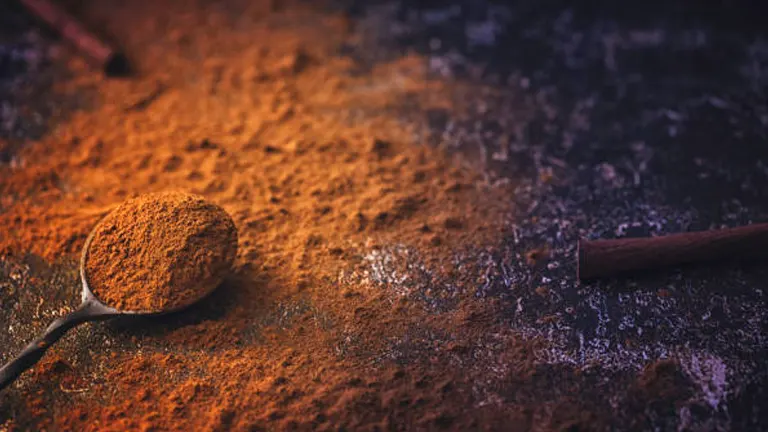
To mitigate root rot, several natural remedies can be employed before considering chemical alternatives. These solutions enhance soil health and create an inhospitable environment for pathogens.
- Cinnamon Powder: Cinnamon is celebrated for its robust antifungal properties. A study shows that sprinkling cinnamon powder around the plant base reduces fungal growth by up to 40%. It acts by disrupting the fungal cell membrane integrity.
- Chamomile Tea: Watering with cooled chamomile tea acts as a gentle fungicide. The antifungal compounds in chamomile, particularly bisabolol and chamazulene, promote healthier root systems by reducing fungal colonization rates.
Chemical Treatments
When natural methods fall short, chemical fungicides become a necessary recourse. These treatments are potent but should be used judiciously to minimize environmental impact.
- Select Targeted Fungicides: Opt for fungicides specifically designed to tackle root rot pathogens like Phytophthora and Pythium. These chemicals are formulated to disrupt the pathogen’s life cycle, providing a targeted approach to disease management.
- Follow Application Guidelines: It is critical to adhere to manufacturer guidelines regarding dosage and application frequency. This ensures effective disease control while safeguarding the plant and surrounding ecosystem from potential chemical overload.
Beneficial Bacteria and Fungi
Incorporating beneficial microbes into the soil can significantly enhance plant defenses against root rot by establishing a healthier root environment.
- Mycorrhizal Fungi: These fungi form a symbiotic relationship with plant roots, extending their reach which enhances water and nutrient absorption. This relationship also provides a natural barrier against soil-borne pathogens.
- Bacillus Subtilis: This beneficial bacterium colonizes the root system, forming a protective shield that impedes fungal invaders. It promotes plant growth and resilience by triggering immune responses within the plant.
Comparative Effectiveness of Root Rot Treatments
| Treatment Type | Active Compound(s) | Efficacy in Reducing Fungal Growth | Recommended For |
|---|---|---|---|
| Cinnamon Powder | Cinnamaldehyde | Up to 40% reduction | All plants, especially ornamentals |
| Chamomile Tea | Bisabolol, Chamazulene | Mild fungicidal activity | Young, sensitive plants |
| Targeted Chemicals | Various (pathogen-specific) | High specificity and effectiveness | Severe infections |
| Mycorrhizal Fungi | Symbiotic association | Natural disease resistance | Most garden and crop plants |
| Bacillus Subtilis | Bacterial colonization | High protective efficacy | Broad range of plants |
Monitoring and Maintenance
Regular Checks and Maintenance Tips
To ensure your plants remain healthy and free from root rot, adopt these routine monitoring practices:
- Routine Inspections: Regularly inspect your plants for early signs of stress or disease. Pay special attention to the color and texture of leaves and roots.
- Moisture Control: Use a soil moisture meter to keep track of soil dampness, ensuring it remains at optimal levels for your specific plant species.
- Seasonal Adjustments: Adjust your watering and care schedule based on seasonal changes in weather and daylight, which can affect plant hydration needs and susceptibility to diseases.
Adapting Care for Different Seasons
Different seasons can significantly influence plant health and the risk of root rot:
- Spring: Ensure proper drainage as melting snow and spring rains increase soil moisture.
- Summer: Increase watering frequency but ensure that water is thoroughly draining to avoid saturation.
- Autumn: Prepare plants for winter by reducing watering and clearing any debris that might retain moisture.
- Winter: Protect plants from overwatering and ensure they are not sitting in frozen or waterlogged soil.
Related Post
- How to Build a Barn: A Step-by-Step Guide for Beginners
- How to Build a Sustainable Compost Bin: Easy and Eco-Friendly DIY
- How to Fertilize Bougainvillea: A Complete Guide for Stunning Blooms
- How to Fertilize Apple Trees: Essential Tips for a Bountiful Harvest
- How to Fertilize Lemon Trees: Secrets for Thriving Citrus
- How to Fertilize Avocado Tree: A Step-by-Step Guide for Lush Growth
- 10 Best Bow Saws to Buy in 2024: Top Picks for the Money
- Best Miter Saw For Beginners
- Top 10 Pruning Saws to Buy in 2024: Best for the Money
- 7 Best Pocket Chainsaw
Conclusion
Preventing and managing root rot requires vigilance and a proactive approach to garden care. By understanding the causes, recognizing the symptoms early, and implementing both immediate and long-term strategies, gardeners can protect their plants from this destructive condition. Regularly monitoring plant health and adapting care practices to changing environmental conditions will play a crucial role in maintaining vibrant and healthy gardens.
FAQs
- What are the first signs that my plant might have root rot?
Early signs of root rot include yellowing leaves, wilting, and stunted growth. If the plant feels loose in the soil and the roots are brown and mushy instead of firm and white, root rot is likely. - Can root rot be cured in very advanced stages?
Once root rot is very advanced, it’s difficult to save the affected plant. However, you can try to salvage parts of the plant that are still healthy by propagating them. - Is it possible to reuse soil that had a plant with root rot?
Reusing soil that had root rot is risky as the pathogens can remain in the soil and infect new plants. It’s best to dispose of the contaminated soil and use fresh, sterile soil for new plantings. - How often should I check my plants for signs of root rot?
Regularly check your plants every time you water them, especially if they’re in conditions known for promoting root rot, like poorly draining soil or overly humid environments. - What type of mulch is best to prevent root rot?
Coarse, breathable mulch like bark chips is ideal as it allows air to circulate and water to drain, reducing the moisture levels around the stem and roots. - Can indoor plants also get root rot, and how can I prevent it?
Indoor plants are susceptible to root rot, primarily due to overwatering and poor drainage. Ensure pots have drainage holes and avoid letting plants sit in standing water. - Are there any plants that are resistant to root rot?
Some plants are more resistant to root rot due to their natural environment adaptations. Examples include lavender, sedum, and cacti. Choosing plants suited to your garden’s conditions can help prevent root rot. - What role do beneficial bacteria play in preventing root rot?
Beneficial bacteria, such as Bacillus subtilis, colonize plant roots and help shield them from harmful pathogens by producing substances that inhibit the growth of root rot-causing fungi and enhance overall plant health.
With these expert techniques, you’re well-equipped to tackle root rot and keep your garden thriving. Remember, the key to plant health is vigilance and proactive care. Happy gardening!

Benjamin Brooks
Forestry AuthorGreetings! I'm Benjamin Brooks, and my journey over the past 15 years has revolved around the fascinating realms of content creation, expertise in snow clearing, and the intricate world of lumberjacking and landscaping. What began as a simple curiosity about the natural world and heavy machinery has evolved into a passionate profession where my love for crafting words intertwines seamlessly with my lumberjacking and garden skills.

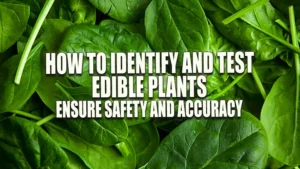



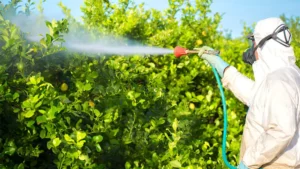







Leave your comment